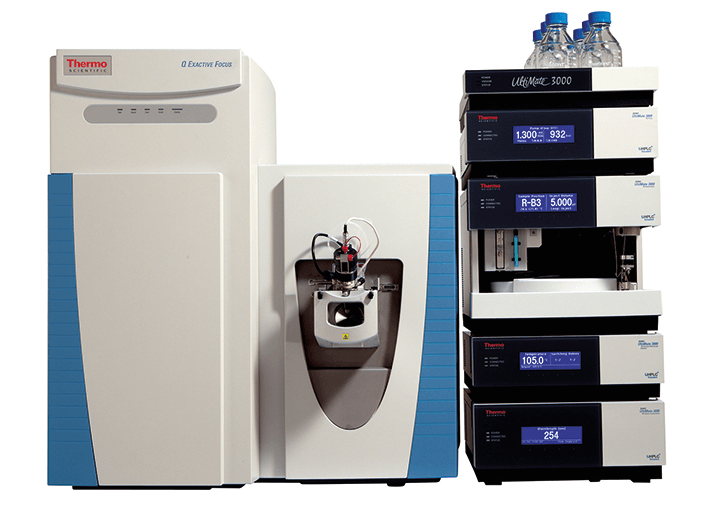We previously introduced the Pesticide Explorer Collection and shared details of the “Standard Quantitation” (see tas.txp.to/1215/standardquan) and “Premium Quantitation” packages (see tas.txp.to/1215/premiumquan). In the final article, we introduce the “HRAM Quantitation” and “HRAM Screening and Quantitation” solutions, both of which benefit from the analytical power of the Thermo Scientific™ Q Exactive™ Focus MS system.
Definitive quantitation
The Orbitrap-based “HRAM Quantitation” configuration uses the Thermo Scientific UltiMate™ 3000 LC system as the separation platform – as do all Pesticide Explorer Collection solutions – but differentiates itself with high-resolution, accurate mass analysis – a unique capability that enables quantitation without compromise in sensitivity, accuracy, precision, and linear dynamic range. When it comes to the complex matrices often encountered in food analysis, high resolving power is particularly useful because it overcomes the masking effects of isobaric interferences, allowing detection of pesticides at very low concentrations. As with all packages of the Pesticide Explorer Collection, HRAM Quantitation comes with all the workflow components needed, from consumables (including the QuEChERS sample preparation reagent kit and HPLC columns), essential hardware and software. The complete package facilitates method development and ultimately enables fast, accurate and cost effective routine pesticide determinations.. Indeed, pre-configured instrument methods for targeted quantitation enable you to start acquiring data with a lot less time and effort – one of the main focal points during development of the collection, according to Dipankar Ghosh, Global Director for Environmental, Food Safety & Industrial Markets at Thermo Fisher Scientific. When it comes to data analysis, the addition of the HRAM Spectral Fragmentation Library (fully integrated and searchable using TraceFinder™ software) – with over 2,600 compounds and more than 15,000 spectra – gives you the ability to identify compounds with speed and confidence.





